#19th century bridge
Explore tagged Tumblr posts
Text
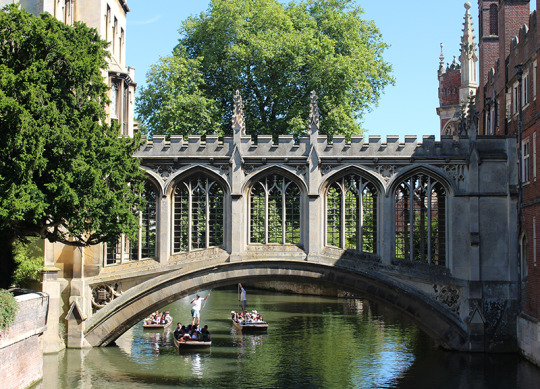
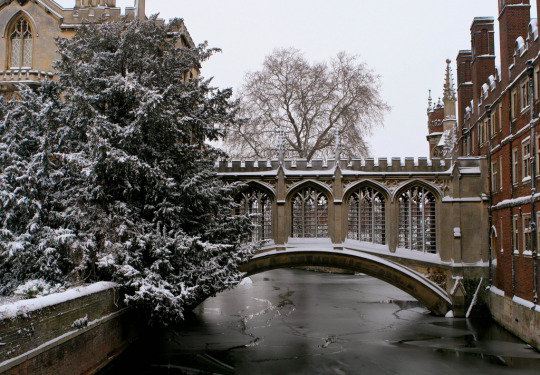


The Bridge of Sighs, St John's College, Cambridge University. UK.
Almost 200 years old, the only College bridge built in the Victorian Gothic Style (by architect Henry Hutchinson)
Top two images - photographers unknown.
Third image - William Henry Fox Talbot, c. 1844. Courtesy of The J. Paul Getty Museum, Los Angeles
The last image includes Wren Bridge, photographer: Harold Jeffreys, 1916
W. H. Fox Talbot was an inventor and pioneer of photography
To read more about the bridge, go here
#cambridge#bridge of sighs#gothic architecture#victorian architecture#stunning bridges#beautiful architecture#willian henry fox talbot#wren bridge#river cam#english architecture#19th century bridge#henry hutchinson
5 notes
·
View notes
Text

FIDELIA BRIDGES
Milkweeds (1876)
3K notes
·
View notes
Text

John Martin (1789-1854) - Bridge over Chaos, 1827
from 'The Paradise Lost of Milton, with illustrations designed and engraved by John Martin', in two volumes, published by Septimus Prowett, London, 1827
#john martin#bridge over chaos#paradise lost#john milton#19th century#victorian gothic#biblical horrors#inferno#religious art#illustration#art
354 notes
·
View notes
Text

Liberty Bridge, Budapest (1896, rebuilt 1945)
#dark academia#light academia#classical#academia aesthetic#escapism#academia#books and libraries#classic literature#books#architecture#bridge#liberty bridge#budapest#1800s#19th century#1900s#20th century#green#beautiful#scenic#royal core#cottage core#aesthetics#mood#vibe#tumblr
545 notes
·
View notes
Text

De Scott Evans (1847-1898) "Daisies" (c. 1885) Oil on linen Located in the Crystal Bridges Museum of American Art, Bentonville, Arkansas, United States Depicted is the artist’s signature, in the pseudonym S. S. David, appearing on a scrap of paper nailed to the wooden panel beneath the precarious bouquet, at risk of being washed away.
#paintings#art#artwork#still life painting#flowers#de scott evans#oil on linen#fine art#crystal bridges museum of american art#museum#art gallery#american artist#daisy#daisies#trompe l'oeil#history#1880s#late 1800s#late 19th century
215 notes
·
View notes
Text

Oedipus and Antigone
Artist: Christoffer Wilhelm Eckersberg (Danish, 1783–1853)
Genre: Mythological Art
Date: 1812
Media: Oil on Canvas
Collection: The National Museum in Stockholm
Description
In this painting of Oedipus and Antigone from 1812, Eckersberg presents a doting and concerned Antigone and an elderly Oedipus who is visibly very frail. Oedipus nonetheless shoulders the burden of carrying some heavy clothing on his back, while Antigone walks more freely, albeit while expending energy tending to her father. I love the bright colours in this scene, but also the way Eckersberg manages to capture the melancholy of both characters and the tenderness between them. On they go, in sadness, across the bridge.
In Greek mythology Antigone is a Theban princess and a character in several ancient Greek tragedies. She is the daughter of Oedipus, king of Thebes; her mother is either Jocasta or, in another variation of the myth, Euryganeia. She is a sister of Polynices, Eteocles, and Ismene. The meaning of the name is, as in the case of the masculine equivalent Antigonus, "in place of one's parents" or "worthy of one's parents".
#greek mythology#mythological painting#mythological art#oedipus#antigone#19th century painting#19th century art#landscape#danish painter#princess#trees#suspension bridge#rocks#water stream#elderly man#father and daughter
43 notes
·
View notes
Text
it really is SUCH a shame that there’s no episode of TOS where the enterprise crew time jumps to Regency-era England or goes to a planet that modeled its culture on that era or something, because it would truly slap for every single main character. Like I don’t even have to explain why this would be awesome for Spock— Mr. I’ll-smash-a-computer-with-my-bare-hands-before-I’ll-admit-I’m-horny himself, king of repression, who basically recreated the famous Pride and Prejudice Hand Flex Scene™️ with his beloved Captain that one time, who meets a blind woman with a high tech gown that helps her “see” and LITERALLY tells her to give his compliments to her dressmaker, who mislead a woman once about his affections and tenderly promised to safeguard her reputation forever about it, who has the perfect angular features to be set off by a cravat—I mean, you get it, but then you’ve also got Kirk—handsome, affable, brave Naval captain who loves his crew more than himself, who falls in like deep profound love with every woman the plot throws at him—and then McCoy—cantankerous, sure, (ever heard of a grumpy/sunshine trope??) but with impeccable, downright old school manners towards women and, yeah, a doctor’s not that prestigious in Regency times, but for like a young lady in trouble who needs the protection of a man’s name or who just wants to piss off her stuffy aristocrat family by marrying “beneath” them, who could be better? If you throw Scotty in the mix, well, he’s Scottish, which [points at a whole subgenre of regency romance novels] is all he’d really need. I’m just saying they would have CLEANED UP, okay??
#by main character I do mean like main cast/top billing#which is why I’m not including uhura and sulu and chekhov#also because they don’t go off on landing party missions that much they stay on the bridge#I included Scotty because he does go with them more often and also…because he’s Scottish literally#like….do you know how many romance novels are just like ‘Scottish men are irresistible to young English maidens’??#it’s NUTS quite frankly#why aren’t any English maidens obsessed with like….welsh guys??#extra funny to imagine this alien culture modeling itself after the Regency era and they just use like 20th and 21st century romance novels#as their guide which like yeah they are well researched in many cases but also they’re primarily designed for escapism not accuracy#so authors will just hand wave certain things#my kingdom for Spock saying ‘fascinating Captain. They seem to base their culture on the fictional though anthropological writings#of 19th century writer Jane Austen’#if they were making it now this could happen#and unfortunately people would call it a Bridgerton inspired episode#and we’d all have to pretend that wasn’t insane#also to be clear no shade at Scotty he’s great and he’s got a lot going for him but in a regency romance he’d have everybody on accent alon#star trek#tos#do I dare tag this as Jane Austen??
22 notes
·
View notes
Text

The Grand Display of Fireworks and Illuminations at the Opening of the Great Suspension Bridge between New York and Brooklyn on the Evening of May 24, 1883, Currier & Ives, 1883
Lithograph on paper 12 × 17 ½ in. (30.5 × 44.5 cm) The Metropolitan Museum of Art, New York City, NY, USA
#art#currier and ives#1880s#19th century#19th century art#new york city#new york#brooklyn bridge#fireworks#lithograph#print#works on paper#the met#american
37 notes
·
View notes
Text


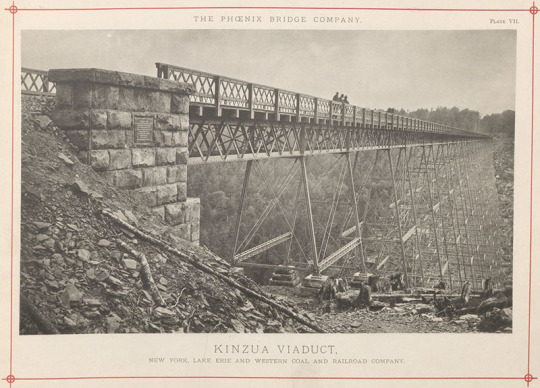


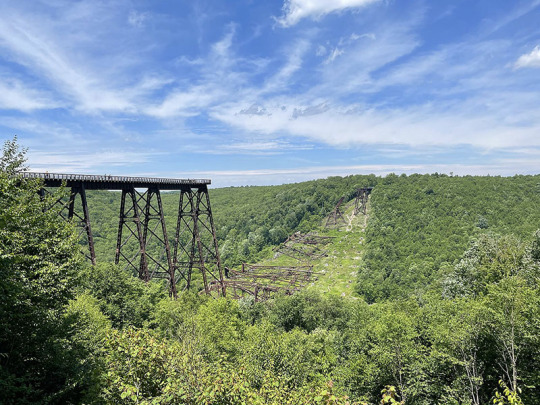

Kinzua Viaduct – Scientist of the Day
The Kinzua viaduct, a wrought-iron trestle railroad bridge in northwestern Pennsylvania, opened for traffic on Aug. 29, 1882.
read more...
#Kinzua Viaduct#bridges#Octave Chanute#civil engineering#histsci#histSTM#19th century#history of science#Ashworth#Scientist of the Day
20 notes
·
View notes
Text
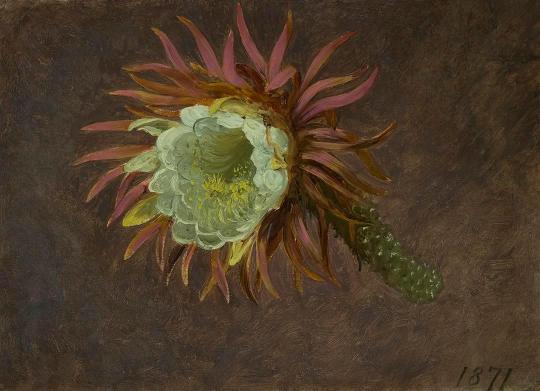
Study of a Night-Blooming Cereus, Martin Johnson Heade, 1871
#art#art history#Martin Johnson Heade#still life#floral study#flowers#Luminism#Hudson River School#American art#19th century art#Crystal Bridges Museum of American Art
145 notes
·
View notes
Text
on reflection, i think there's a symmetry to, say, doctors who are willing to refer patients to osteopaths or other ""holistic"" healthcare providers and the susceptibility of engineers to certain kinds of crankdom (of the "i-disproved-relativity-in-my-garage" type). both are forms of scientific training of a sort, but they're heavily outcome-focused and not theoretically focused. in large part, this is good! you do not as a doctor need to have a robust theoretical defense of every treatment you provide to patients, and it would be impossible to do so, because medicine is a huge and complicated subject. you do not, as an engineer, need to have a subtle grasp of theoretical physics to build a bridge; you just need to know what the latest developments in bridge-building are.
but it means in both cases you can have people who are skilled in their field, or who even excel, but who don't understand very well why certain techniques work. and in the case of alt medicine, where there has been considerable work to try to obfuscate or deceive people on how shaky the theoretical basis for their techniques are (stuff that literally if you remember your high-school physics and biology at all will make you go, "wait, there is no plausible mechanism for this, that's not how any of this works"), doctors who do not have time to read studies on RCT trials of every type of medicine they have ever heard of will blithely recommend stuff to patients that's actually complete horseshit, especially if the culture around them has been normalizing that woo as part of "holistic" therapy for the last hundred years, spurred on by alternative medicine practitioners and a public with a fear of needles and ~chemicals~ that medical practitioners have not done enough to allay.
it does not help that medicine only emerged very recently from being about 99% bullshit. like maybe at the end of the 19th century at best medicine was starting to be put on a broad-based empirical and theoretical footing--before that it's truly insane the stuff that wasn't just considered perfectly normal medical practice, but was considered serious Science. i mean, this is why we developed double-blind studies in the first place--because theoretical explanations of medical treatments are still necessarily often secondary to the process of finding ones that actually work, so we need really robust mechanisms to avoid confirmation bias or outright charlatanry. and while mainstream medicine is far from perfect in this respect, "alternative medicine" is all far, far worse.
#imagine if bridge-building was still trial and error half the time#like medieval cathedral building#that's probably not very fair to medicine#like we've gotten so much better in just the last seventy years#at targeted medical research#but still sometimes we develop new treatments#and we're like 'idk why this works but i'm pretty sure it does'#psychology still feels like it's full of individual practitioners with idiosyncratic theories#inventing therapies in an ad-hoc way#like ye olde 19th century doctors#but psychology is still theoretically very weak#so that kinda makes sense to me
96 notes
·
View notes
Text

🇬🇧 The Conwy Railway Bridge, in Welsh known as Pont Rheilffordd Conwy, and Conwy Castle (Castell Conwy) in Wales - a vintage photochrom print from the 1890s.
The bridge was designed by Robert Stephenson and opened in 1849. It's still in use and protected as Welsh heritage.
#Conwy#Conway#Wales#Cymru#bridge#railways#Fascinating Europe#Europe#Architectural Revival#heritage#UK#Britain#photography#photo#foto#fotografie#photos#oldphoto#vintage#Old Views#cityscape#architecture#1890s#19th century#made in europe
14 notes
·
View notes
Text

Barnard Castle
Artist: Joseph Mallord William Turner (British, 1775–1851)
Date: circa 1825
Medium: Watercolor, pen and black ink, gouache and scratching out on medium, slightly textured, cream wove paper, mounted on thick, smooth, cream wove paper
Collection: Yale Center for British Art, New Haven, CT, United States
#watercolor#drawing#architectural subject#bridge#castle#landscpae#light#river#ruins#trees#joseph mallord william turner#british artist#19th century art#european art#british culture#barnard castle#durham#england#united kingdom
15 notes
·
View notes
Text

An Avenging Shadow, or, The Mystery of the Haunted Bridge
The Princess's Novelettes, published in UK 1886-1904.
#an avenging shadow#the mystery of the haunted bridge#the princess novelettes#ghost stories#mystery#victorian gothic#penny dreadfuls#art#illustration#christmas#19th century#19th century art
69 notes
·
View notes
Text

Ice Rink by August Piepenhagen, 1840s-1850s.
#classic art#painting#august piepenhagen#german artist#19th century#landscape#nature#trees#bridge#staffage#ice#winter
39 notes
·
View notes
Text

"An Occurrence at Owl Creek Bridge" is available to read here
#short stories#short story#an occurrence at owl creek bridge#ambrose bierce#19th century lit#english language lit#american lit#have you read this short fiction?#book polls#completed polls#links to text#tw noose#cw noose#tw death#cw death
20 notes
·
View notes